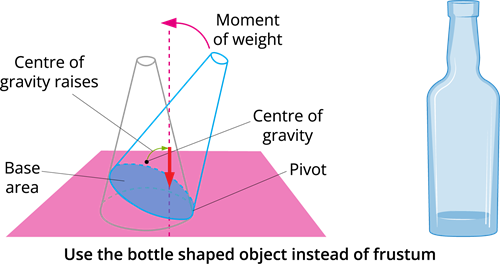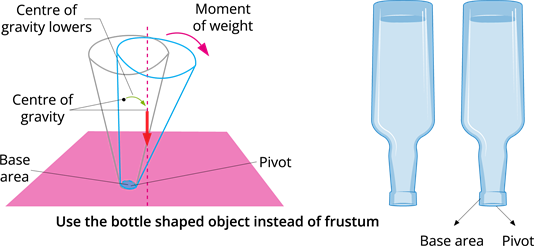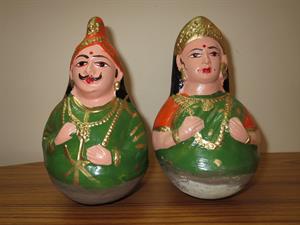PDF chapter test TRY NOW
Stability is the measurement of an object's ability to maintain its original position. If the object can maintain its original position of all the circumstances, the object is more stable.
There are three types of stability.
1. Stable equilibrium
2. Unstable equilibrium
3.Neutral equilibrium
Stable equilibrium:
The objects are said to be stable when it is tilted, the vertical line through its centre of gravity still falls within its base.
Due to the large base of an object, the vertical line through the centre of gravity falls within its base.
Therefore, the large base of an object gives more stability to the object.
Example:

In the above figure, when we slightly tilt the bottle-shaped objects without toppling, we can see that the centre of gravity is raised when it is displaced.
Observe that the vertical line through its centre of gravity still falls within its base, so that the object can return to its original position, as it has a large base.
Therefore, the objects which have a large base are more stable.
Unstable equilibrium:
The object will be unstable when it is tilted; the vertical line through its centre of gravity does not fall within its base.
Due to the small base of an object, the vertical line through the centre of gravity does not fall within its base.
Due to the small base of an object, the vertical line through the centre of gravity does not fall within its base.
Therefore, the small base of an object gives less stability to the object.

Neutral equilibrium:
Now we see the condition of an object when it's in a neutral state.
- The neutral equilibrium causes the object to topple.
- The object's centre of gravity remains at the same height when it is displaced.
The below figure explains the object condition at the neutral equilibrium.

So far we have discussed the stability and its types. Now, let us see what are the certain conditions that increase the stability of an object.
The conditions for stability:
- Increase the area of its base
- The centre of gravity should be lower
Because a heavy base lowers at the centre of gravity. So, the box does not tip over.
The Thanjavur doll:

It is a terracotta-based traditional Indian toy. The doll's centre of gravity and total weight are concentrated at its lowest point, resulting in a continuous dance-like movement with slow oscillations.
Reference:
https://upload.wikimedia.org/wikipedia/commons/4/4e/Tanjore_doll_1.jpg
